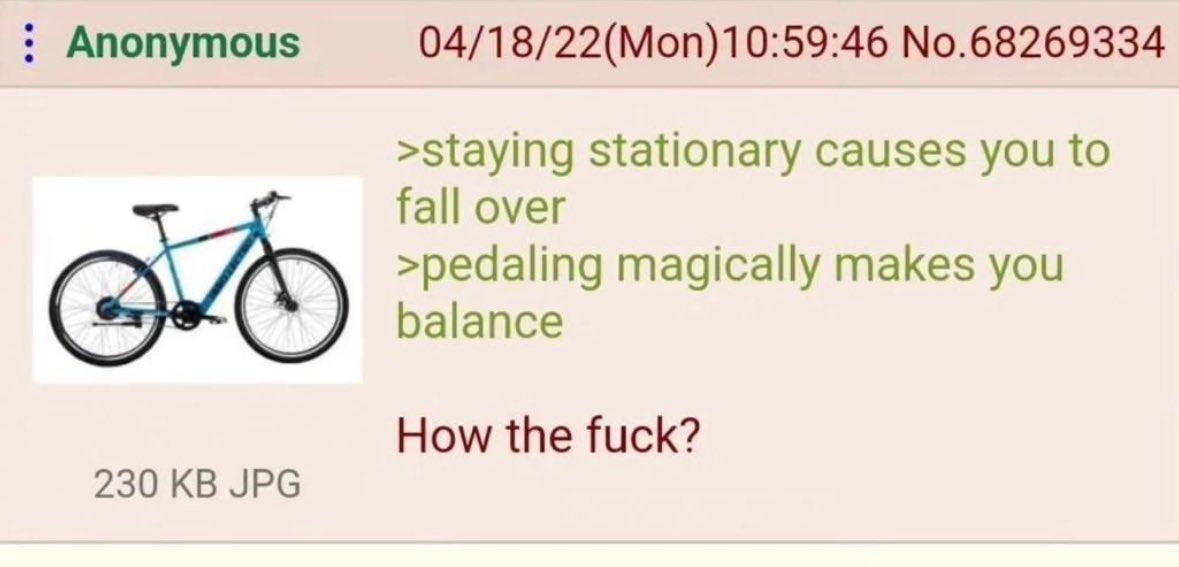this post was submitted on 17 Sep 2024
691 points (98.2% liked)
Greentext
7112 readers
1154 users here now
This is a place to share greentexts and witness the confounding life of Anon. If you're new to the Greentext community, think of it as a sort of zoo with Anon as the main attraction.
Be warned:
- Anon is often crazy.
- Anon is often depressed.
- Anon frequently shares thoughts that are immature, offensive, or incomprehensible.
If you find yourself getting angry (or god forbid, agreeing) with something Anon has said, you might be doing it wrong.
founded 2 years ago
MODERATORS
you are viewing a single comment's thread
view the rest of the comments
view the rest of the comments

But then, why would they be more stable when moving, even without a rider? If the steering is tight enough, you can push a bike to someone a good distance away. You can do it with a scooter too, although it's a lot harder.
You can also look at a motorcycle. Their mass is far greater than a human's, a person could never manage that. Those little RC motorcycles are the same, they don't need some crazy balancing system to mimic humans, they just need to stay upright enough to get some speed going, then they balance themselves.
It's the same with a wheel - the speed makes it stay upright, they can balance on the tiniest edge so long as they're moving
It's not a gyroscopic effect either, though that's present. It's a balance between rotation speed and the friction with the ground - the object as a whole has momentum, the rotation has momentum, and the contact with the ground balances the two. It'll try to put it's center of mass in line with these forces acting on it
Add in a human, and they can shift the center of mass on the fly. The vehicle's speed is still pushing you upright - get on a bike with some good speed, and you can lean very far into a turn and ease off to return upright. Way more than you could if it wasn't moving
Normal bikes that you just push aren't that stable without a rider, but you can get it some distance. They still fall over rather quickly. That's mostly the form of the handlebars like gnu commented. And yes, without a rider, the gyroscopic effect is relevant. A bike weighs let's say 15 kg, and a rider is commonly like 75kg. Of course removing like 80% of the weight changes if the gyroscopic has a meaningful influence. Add the rider back, and it becomes negligible again.
This is of course even more pronounced if you push only a wheel with nothing else, then there's nothing left but momentum and the gyroscopic effect.
The reason you lean into a turn is exclusively the centrifugal force (not sure that's the right twin), if you don't you fall over because you have nothing to turn against. Changing direction needs something to push against.